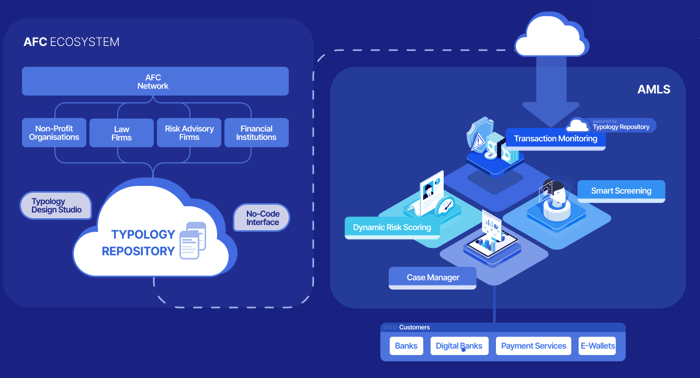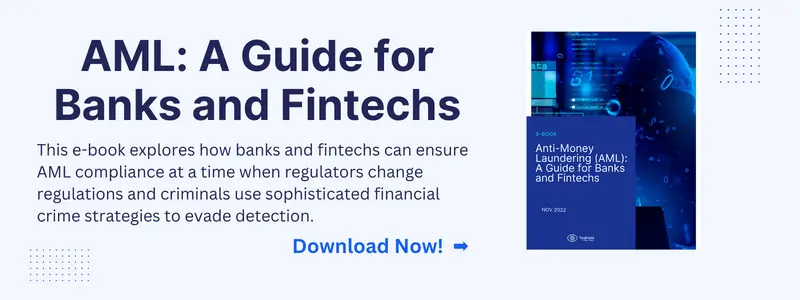Emerging AML Landscape in Malaysia: Challenges and Solutions
Every year, billions of dollars are illicitly circulated through a labyrinth of financial transactions, obfuscating their origin and purpose - a devious practice known as money laundering. By enabling illegal profits to appear legitimate, money laundering provides the economic fuel that drives grave criminal activities worldwide, from drug trafficking to terrorism.
In Malaysia, a rapidly evolving financial landscape and a robust digital economy have presented an increasingly intricate backdrop for money laundering activities. This economic powerhouse in Southeast Asia, known for its dynamic banking sector and burgeoning fintech industry, has not remained unscathed in the face of this global menace.
Recent data reveal a worrying upward trend in money laundering incidents within the country. Financial institutions are grappling with increasingly sophisticated laundering techniques, making detection and prevention an uphill task. As the nation strives to fortify its financial ecosystem, understanding the nuances of these emerging money laundering trends has become critical.
In this blog, we delve into the mutating landscape of money laundering in Malaysia, focusing on its impact on financial institutions and the country's economy. We'll explore the role of technology in combating these challenges and spotlight Tookitaki's groundbreaking approach to modernising Anti-Money Laundering (AML) detection and prevention.
Evolution of Money Laundering Activities in Malaysia: From Simplicity to Sophistication
Over the years, money laundering activities in Malaysia have evolved from simple, easily traceable methods to complex, multi-layered operations. The traditional money laundering schemes that once dominated—such as simple cash smuggling or misdeclaration of goods and services—are increasingly being replaced by elaborate tactics that exploit the modern financial system's complexities.
- Among the newer tactics is Trade-Based Money Laundering (TBML), where launderers overstate or understate the value, quantity, or quality of goods and services to move money across borders. TBML can be extraordinarily difficult to detect due to the massive volume of global trade transactions.
- Cyber-enabled money laundering has also been on the rise. Given the rapid growth of the digital economy in Malaysia, cybercriminals are exploiting the anonymity provided by digital currencies and online transactions. Methods like 'smurfing' have also been employed in online platforms, where larger transactions are broken down into numerous smaller ones to evade detection.
- Another recent trend is the use of 'money mules'—individuals who, knowingly or unknowingly, transfer money on behalf of or at the direction of criminals. These money mules have become central to many digital money laundering schemes, further complicating detection efforts.
- Interestingly, the COVID-19 pandemic has also led to a surge in pandemic-related frauds, such as phishing attacks and online scams, with launderers capitalizing on the chaos and fear of transferring illicit funds.
These evolving tactics underscore the dire need for a more proactive, adaptable approach to AML efforts in Malaysia that can keep pace with the speed and creativity of modern money launderers.
The Ripple Effect: Impact and Challenges of Emerging Money Laundering Trends
The escalating sophistication of money laundering activities profoundly impacts Malaysia's financial ecosystem and the broader economy. Economically, money laundering can distort market functioning, undermining stability and deterring foreign investment. On a societal level, the proceeds of these illicit activities often fund dangerous criminal enterprises, posing severe security and public health threats.
Specifically, within the financial sector, these trends pose several significant challenges:
- Complex Detection: The intricacy and diversity of modern laundering methods severely complicate detection efforts. Tactics like TBML, cyber-enabled laundering, and 'smurfing' are designed to avoid triggering traditional detection systems, posing a serious challenge to financial institutions.
- Increased Regulatory Pressure: As money laundering tactics evolve, so too do regulatory standards. Authorities in Malaysia, including Bank Negara Malaysia (BNM), have introduced stringent AML regulations and penalties for non-compliance, increasing pressure on financial institutions to upgrade their AML capabilities.
- Operational Costs: The rise in sophisticated laundering activities has led to an increased volume of alerts for potential illicit transactions. The majority of these alerts often turn out to be false positives, leading to wasted time and resources in investigations.
- Risk of Reputational Damage: In an era of increasing transparency and accountability, financial institutions risk severe reputational damage if implicated in money laundering scandals. This risk is amplified by the emergence of social media and 24/7 news coverage.
Given these challenges, financial institutions and regulatory bodies in Malaysia face an urgent need to adapt and enhance their AML frameworks, embracing innovative solutions that can keep pace with evolving money laundering tactics.
Harnessing Technology: The New Frontier in Anti-Money Laundering
As money laundering tactics evolve, so must the tools used to combat them. In the forefront of this battle is technology, offering a powerful arsenal to detect, prevent, and dismantle sophisticated laundering schemes.
One key advancement is the use of Artificial Intelligence (AI) and Machine Learning (ML) in AML efforts. These technologies enable more effective identification of suspicious activities, breaking down complex patterns and relationships impossible for human analysts alone to discern.
- AI and Machine Learning: By analyzing vast datasets, AI and ML algorithms can identify complex patterns and correlations indicative of potential money laundering activities. Machine learning, in particular, can adapt and learn from new information, continuously improving its ability to detect suspicious transactions.
- Real-time Transaction Monitoring: Advanced AML systems can track and analyze transactions, offering immediate detection of potentially illicit activity. This capability drastically reduces the time between a suspicious transaction and its investigation, hindering launderers' ability to move and hide illicit funds.
- Risk Profiling: Technology enables more nuanced, dynamic risk profiling of clients. Instead of static risk categories, advanced AML systems can generate detailed risk profiles based on a wide range of factors and continuously update these profiles as new data emerges.
- Reducing False Positives: AI and ML can drastically reduce the number of false positives—alerts that initially appear suspicious but, on investigation, prove benign. By improving alert accuracy, these technologies enable AML investigators to focus their efforts on genuinely suspicious activities.
Despite these advancements, technology is not a panacea. Its successful implementation requires a deep understanding of the AML landscape and the technologies' intricacies. That's where pioneers like Tookitaki come in.
Pioneering the Fight: Tookitaki's Innovative Approach to Money Laundering Challenges
Tookitaki, a global leader in regulatory compliance solutions, has a clear mission – to revolutionize the fight against money laundering. Tookitaki has built a comprehensive suite of AML solutions uniquely equipped to address the emerging challenges in money laundering.
The company revolutionises the fight against financial crime by breaking the siloed AML approach and connecting the community through its two distinct platforms: the Anti-Money Laundering (AML) Suite and the Anti-Financial Crime (AFC) Ecosystem. Tookitaki's unique community-based approach empowers financial institutions to effectively detect, prevent, and combat money laundering and related criminal activities, resulting in a sustainable AML program with holistic risk coverage, sharper detection, and fewer false alerts.
The AML Suite is an end-to-end operating system that modernises compliance processes for banks and fintechs. In parallel, the AFC Ecosystem serves as a community of experts dedicated to uncovering hidden money trails that traditional methods cannot detect. Powered by federated machine learning, the AML Suite collaborates with the AFC Ecosystem to ensure that financial institutions stay ahead of the curve in their AML programs.
The AMLS includes several modules such as Transaction Monitoring, Smart Screening, Dynamic Risk Scoring, and Case Manager. These modules work together to provide a comprehensive compliance solution covering all AML aspects, including detection, investigation, and reporting.
The AMLS, with its modular design, covers key aspects of AML compliance including smart screening solutions, dynamic risk scoring, and advanced transaction monitoring. The AFC Ecosystem brings together a community of experts working tirelessly to uncover hidden money trails that conventional methods fail to detect.

Transforming AML Detection in Malaysia
In Malaysia, Tookitaki's AML solutions have made a significant impact. Banks and fintechs have leveraged these tools to effectively detect, prevent, and combat money laundering and related criminal activities. These successes represent important strides towards a sustainable AML program in Malaysia.
With a strong commitment to continuous innovation, Tookitaki is poised to further enhance its technology, helping to shape the future of AML compliance. As money laundering activities evolve, so will Tookitaki's solutions, ensuring that Malaysia's financial institutions always stay ahead of the curve.
Shaping the Future: AML Efforts in Malaysia
The future of Anti-Money Laundering efforts in Malaysia, as in the rest of the world, lies firmly in advanced technology. As money laundering schemes become increasingly sophisticated, the solutions to counteract them must also evolve. This opens a realm of possibilities for the development of even more powerful tools in the AML arsenal.
Technology's Potential in the AML Landscape
Machine learning, AI, and other innovative technologies are expected to play an even greater role in AML compliance. The ongoing development of these technologies holds the promise of further improvements in risk profiling, anomaly detection, and real-time transaction monitoring. We could also see the rise of predictive AML analytics, where AI systems might anticipate suspicious activities based on emerging patterns, thereby enabling preventive measures.
Moving Forward: Staying Alert in the Face of Evolving Money Laundering Trends
As we navigate the ever-changing landscape of money laundering, vigilance and adaptability remain our greatest tools. The emerging trends in money laundering in Malaysia underscore the importance of staying ahead of the curve and responding swiftly and effectively to new challenges.
Innovative technology, such as that offered by Tookitaki, presents a powerful means of achieving this. It allows us to enhance our detection capabilities, improve accuracy, and reduce financial crime risk, ultimately securing our financial ecosystem.
For financial institutions seeking to strengthen their AML efforts and combat the latest trends in money laundering, Tookitaki’s Anti-Money Laundering Suite (AMLS) and Anti-Financial Crime (AFC) Ecosystem provide the answer. We encourage you to book a demo and explore how Tookitaki's solutions can contribute to your AML compliance efforts and help secure the future of Malaysia's financial ecosystem. Don't wait for the next trend to emerge - be prepared and stay ahead.
Anti-Financial Crime Compliance with Tookitaki?




